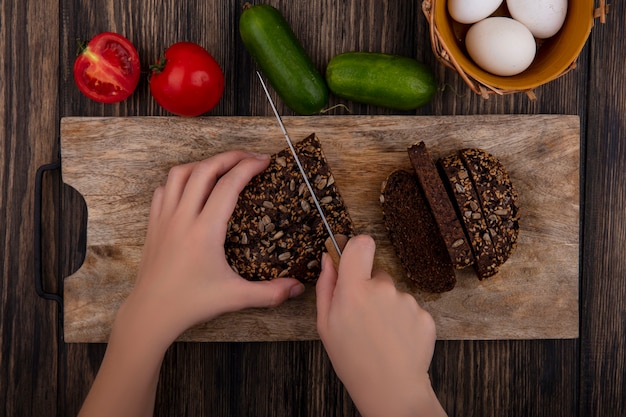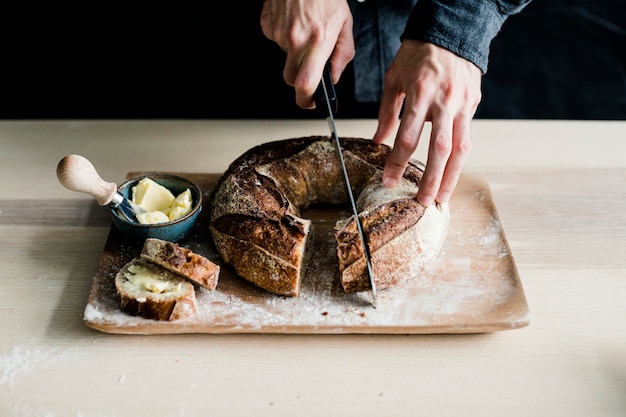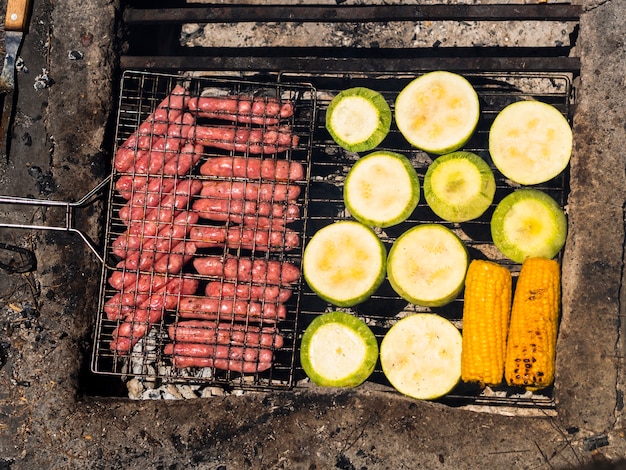Let's talk corned beef brisket. You know, that glorious, melt-in-your-mouth masterpiece that's a true testament to slow cooking. Now, I've been perfecting my corned beef brisket recipe for years, and trust me, this ain't your average, run-of-the-mill recipe. We're talking about achieving the ultimate level of tenderness, deep, rich flavour, and a dish that'll have everyone begging for seconds (and thirds!). So grab a cuppa, settle in, and let's dive into this culinary adventure together!
(Part 1) The Beef: choosing the right cut

Firstly, you need the right brisket. Now, I'm a big fan of the point cut. It's got that gorgeous marbling, which translates to incredible juiciness and flavour. When you're at the butcher's, don't be shy. Have a good look at the meat. You want a brisket with a healthy layer of fat; it'll render down during cooking, keeping the meat moist and succulent. And while we're at it, if they have a flat cut brisket, grab one of those too! It's a leaner cut, ideal for sandwiches. We'll explore its uses later.
(Part 2) Preparing the Brisket: The Essential Brine

Why Brining is Key
Brining is crucial. It's like giving your brisket a luxurious spa day, a soak in a bath of flavour. The salt in the brine draws moisture out of the meat, which then reabsorbs it, leaving the brisket incredibly juicy and tender. You can find all sorts of fancy brines out there, but I like to keep it simple.
My Simple Brine Recipe
You'll need:
- 1 gallon (4 litres) of cold water
- 1 cup (240 ml) of kosher salt. You can substitute table salt, but use a bit less.
- 1/2 cup (120 ml) of brown sugar - it adds a touch of sweetness and helps balance the salt.
- 2 tbsp (30 ml) of black peppercorns - for a peppery kick.
- 2 bay leaves - for a subtle, earthy aroma.
- 4 cloves of garlic, crushed - to add a depth of flavour.
- 2 tsp (10 ml) of dried thyme - for a herbaceous note.
Mix everything together in a large container, making sure the salt dissolves completely. Submerge your brisket in the brine and pop it in the fridge for at least 24 hours. For even better results, go for 36 hours. However, don't go beyond that – you don't want to over-salt the brisket.
(Part 3) The Cook: Low and Slow in the Smoker

The Importance of Low and Slow
Now, here's where the magic happens. You're going to cook your brisket low and slow. Imagine the brisket relaxing, chilling out, getting tender and delicious. You can use an oven, but a smoker is the way to go. It adds that incredible depth of flavour you just can't get anywhere else. The smoke infuses the brisket with a unique character and complexity.
Setting Up the Smoker: A Symphony of Smoke
First, you need to get your smoker going. I use wood chips, but you can use whatever you like. Hickory, pecan, or applewood are all good options, each adding its own distinct flavour profile. I like to use a blend of a few different types for a more complex flavour. Now, before you pop your brisket on the smoker, let's get a good rub going. I use a simple blend of:
- Salt
- Pepper
- Paprika
- Garlic powder
- Onion powder
Feel free to add your favourite spices! You can experiment with different combinations; it's all about creating the flavour profile you love. Now, rub that goodness all over your brisket.
The Long Wait: Patience is a Virtue
Ready to smoke? Set your smoker to around 225 degrees Fahrenheit (110 degrees Celsius), and let the brisket cook for about 6-8 hours, or until it reaches an internal temperature of 200 degrees Fahrenheit (93 degrees Celsius). This is where patience comes into play. You'll want to check on your brisket every hour or so, adding more wood chips as needed. Keep the smoke going, and the temperature consistent. You want a steady, slow cook.
(Part 4) The Wrap: Boosting Tenderness and Flavor
The Importance of Wrapping
After a few hours of smoking, you'll notice that your brisket is starting to develop a beautiful bark, that crispy crust that forms on the outside. But we're not done yet! It's time to wrap the brisket. Some people prefer butcher paper, others swear by aluminum foil. Personally, I'm a parchment paper fan. It offers a good balance of letting the brisket breathe while keeping it moist.
The Wrap and Go Method: Bringing It Home
Place your brisket on the wrapping material, fold it over, and twist the ends tightly to create a packet. This traps in the moisture and heat, allowing the brisket to continue cooking and become even more tender. Pop the wrapped brisket back in the smoker and let it cook for another 2-3 hours. By this point, the brisket will be so tender it practically falls apart. Keep an eye on the temperature, ensuring it stays around 200 degrees Fahrenheit (93 degrees Celsius).
(Part 5) The Rest: A Crucial Step for Juiciness
Why Resting is Essential
Your brisket is cooked, the smoke has infused every fibre, and the bark is crackling. But wait, we're not quite done! You need to let the brisket rest for at least an hour before slicing. This allows the juices to redistribute throughout the meat, making it even more succulent and flavourful. I usually wrap the brisket in a few towels to keep it warm while it rests.
(Part 6) The Slice: The Art of Getting It Right
Slicing for Maximum Tenderness
Finally, it's time to slice your brisket. I recommend using a sharp, thin-bladed knife. Slice against the grain, which means cutting across the muscle fibres. This makes the brisket easier to chew and even more tender. You can slice it thin or thick, depending on your preference. I usually go for thin slices. As you slice, don't be afraid to pull some of the fat off. It can be a bit greasy, but it adds flavour. You can always use it later to make a rich and delicious gravy.
(Part 7) The Serving: Pairing Your Masterpiece
The Perfect Sides for a Perfect Meal
Now, what goes well with brisket? Endless possibilities! Here are some of my personal favourites:
- mashed potatoes - a classic pairing that always works. The creaminess of the mashed potatoes complements the richness of the brisket.
- Creamy coleslaw - a refreshing touch that adds a welcome contrast in texture and temperature.
- Baked beans - a sweet and smoky counterpoint to the savoury brisket. They add a bit of depth and complexity to the meal.
- Roasted vegetables - a healthy and colourful option, adding a vibrant touch to the plate. They also provide a nice balance to the richness of the brisket.
But honestly, serve your brisket with whatever you like! It's a versatile dish that can be dressed up or down. Just make sure you have enough napkins on hand, because it's a messy, delicious adventure.
(Part 8) The Flat Cut: From Brisket to Sandwich
Using the Flat Cut for Sandwiches
Remember that flat cut we mentioned earlier? It's perfect for making those mouthwatering corned beef sandwiches. The flat cut is leaner than the point cut, making it ideal for sandwiches. After brining, you can cook it the same way as the point cut, but you may need to reduce the cooking time a bit. Once it's cooked, slice it thinly and enjoy it in a sandwich with some mustard and pickles. It's pure sandwich bliss.
(Part 9) Leftovers: The Beauty of a Brisket Legacy
Maximizing Your Brisket's Potential
If you're lucky enough to have leftovers (which is unlikely, but we'll assume for this exercise!), don't just throw them away. There's a whole world of culinary potential waiting to be unleashed. Shred the brisket and use it in stews, soups, burrito bowls, salads – the possibilities are endless! You can even use the brisket fat to make a rich gravy or add it to a pot of beans. Just remember to refrigerate the brisket and use it within 3-4 days. It's too delicious to waste!
(Part 10) FAQs: Answers to Your Burning Questions
What if my brisket is too salty?
If your brisket is a bit too salty, you can try soaking it in cold water for a few hours to draw out some of the salt. But honestly, a little saltiness is expected with corned beef, and it usually isn't too bad. Just balance it with some less salty side dishes. The flavour will be worth it!
Can I use a different type of meat?
You can, but it won't be the same. Brisket is the best cut for corned beef because it's got the perfect balance of fat and muscle. You could try using a chuck roast, but it won't be as tender. And don't even think about using a leaner cut of meat, like sirloin or tenderloin. It'll just dry out. Stick with brisket!
What if I don't have a smoker?
You can cook your brisket in the oven, but it won't have that same smoky flavour. Set your oven to 225 degrees Fahrenheit (110 degrees Celsius), and cook the brisket for 6-8 hours, or until it reaches an internal temperature of 200 degrees Fahrenheit (93 degrees Celsius). Remember to wrap the brisket for the last few hours of cooking. You can also buy pre-smoked brisket, but it won't be quite the same as making it from scratch. If you really want to achieve that smoky flavour, invest in a smoker! They're worth it.
Can I freeze my corned beef brisket?
Yes, you can freeze your corned beef brisket. Just make sure it's wrapped tightly in plastic wrap and aluminum foil, and freeze it for up to 3 months. When you're ready to use it, thaw it in the refrigerator for 2-3 days before cooking.
How do I make corned beef gravy?
To make a delicious corned beef gravy, you'll need the drippings from the brisket, along with some flour, water, and seasonings. First, skim off any excess fat from the drippings. Then, whisk in some flour and cook it over medium heat for a few minutes. Gradually whisk in some water until the gravy is the desired consistency. Season with salt, pepper, and other spices, such as garlic powder or onion powder. You can also add some of the brisket fat back in to add more flavour. It's a rich and flavourful complement to the brisket.
And there you have it! My ultimate guide to making corned beef brisket. It might take a bit of time and effort, but trust me, the results are well worth it. So, grab a good brisket, gather your spices, fire up the smoker, and get ready to experience the magic of slow-cooked corned beef. Happy cooking!
Everyone is watching

Corn on the Cob: The Ultimate Guide to Perfectly Cooked Ears
Healthy MealsAh, corn on the cob. Just the name evokes images of sunny days, barbecues, and that sweet, juicy flavour that ...

Scallops: The Ultimate Guide to Perfect Cooking
Healthy MealsAh, scallops. Those delicate, sweet, and utterly delicious morsels of the sea. They hold a special place in my...

Spaghetti Squash: The Ultimate Guide to Cooking and Serving
Healthy MealsRemember that time you saw spaghetti squash at the supermarket, looking all bumpy and strange, and thought, "W...

Salmon Cooking Times: Perfect Guide for Every Recipe
Healthy MealsLet me tell you, cooking salmon is an art form. It's all about getting that perfect balance: juicy and tender,...

Ham Cooking Time: How Long to Bake, Smoke, or Boil a Delicious Ham
Healthy MealsAh, ham. It's a classic, isn't it? A real crowd-pleaser, especially around holidays. And when done right, it'...
